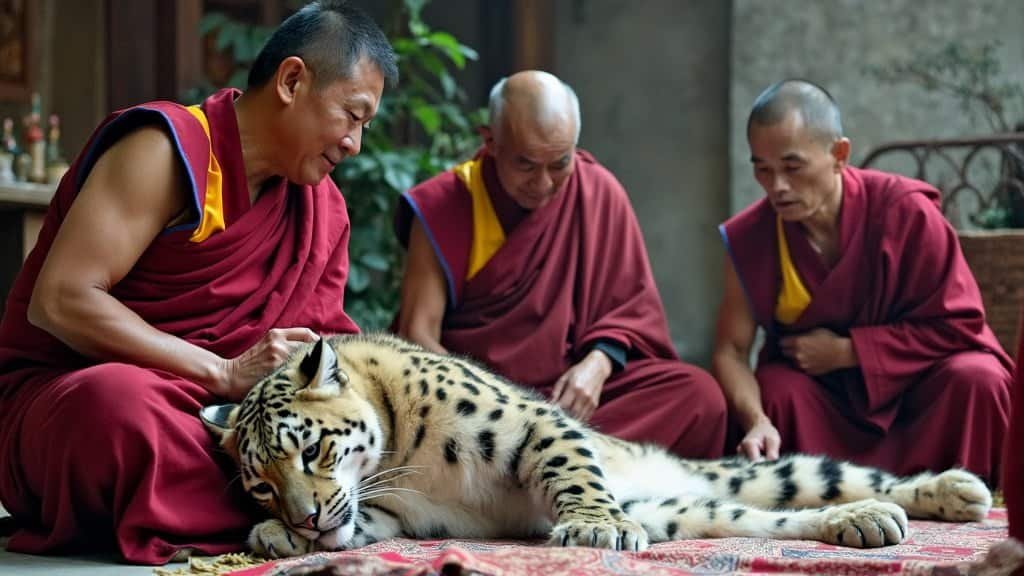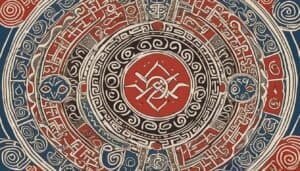Introduction
Snow leopards, known for their elusive nature and majestic beauty, have long held significant cultural value in various regions, particularly in Central Asia and the Himalayas
Their pelts and bones have been traditionally used for a range of purposes, from spiritual and medicinal practices to clothing and trade. These uses, deeply embedded in the cultural fabric of many societies, reflect the snow leopard’s symbolic power and practical value
However, these traditional practices have also had a profound impact on snow leopard populations, leading to conservation challenges that seek to balance cultural heritage with the need to protect this endangered species. This article explores the traditional uses of snow leopard pelts and bones, their cultural significance, and the ongoing efforts to preserve the snow leopard
Traditional Spiritual Significance of Snow Leopard Pelts
Snow leopard pelts have been revered in various cultures, particularly in the mountainous regions of Central Asia, where these elusive creatures dwell. The pelts are not merely valued for their beauty and warmth but hold deep spiritual significance
In many cultures, the snow leopard is seen as a powerful totem animal, symbolizing strength, protection, and the ability to navigate both the physical and spiritual realms. This has made the snow leopard’s pelt a prized possession in rituals and spiritual practices
The Role of Snow Leopard Pelts in Rituals
In the traditional practices of Tibetan Buddhism, for instance, snow leopard pelts were historically used by high-ranking lamas during specific ceremonies
The pelts were believed to endow the wearer with the spiritual attributes of the snow leopard, such as the ability to ward off evil spirits and guide souls through the afterlife. The fur was often draped over the shoulders or fashioned into ceremonial garments, symbolizing the connection between the physical and spiritual worlds
This practice, however, has diminished significantly due to increasing awareness of wildlife conservation and legal restrictions on hunting
Cultural Beliefs Surrounding Snow Leopard Pelts
Beyond religious rituals, snow leopard pelts have also been associated with various cultural beliefs. In Mongolian shamanism, the snow leopard is seen as a guardian of the sacred Altai Mountains
The pelts were used in shamanic rituals to invoke the spirit of the snow leopard, believed to protect the tribe from misfortune and ensure successful hunting expeditions. The pelts were also considered symbols of leadership and bravery, often passed down as heirlooms within families, symbolizing the strength and resilience required to survive in the harsh mountain environment
Spiritual Symbolism and Totem Use
The snow leopard’s status as a totem animal extends beyond the use of its pelt in rituals. In many Himalayan cultures, the snow leopard is revered as a mystical creature that bridges the human and divine. The sighting of a snow leopard is considered a powerful omen, often interpreted as a blessing from the gods
As a totem, the snow leopard embodies qualities such as solitude, introspection, and the ability to thrive in adversity. These attributes are deeply respected in the harsh, high-altitude environments where these communities live, reinforcing the spiritual connection between the snow leopard and the people who share its habitat
Medicinal Uses of Snow Leopard Bones
Snow leopard bones have been utilized in traditional medicine across several cultures, particularly in regions where these majestic animals are native. In these practices, the bones are believed to possess healing properties that can treat a variety of ailments
However, the use of snow leopard bones in traditional medicine has raised significant concerns regarding the impact on their populations and the sustainability of these practices
Traditional Remedies Involving Snow Leopard Bones
In traditional Chinese medicine (TCM), snow leopard bones have been used as a remedy for conditions such as arthritis, bone fractures, and other musculoskeletal ailments. The bones are often ground into powder and mixed with other herbs to create potent medicinal concoctions
The underlying belief is that the strength and agility of the snow leopard can be transferred to the patient, thereby improving their physical condition. Similarly, in Tibetan medicine, snow leopard bones have been used in the preparation of various remedies aimed at enhancing physical strength and vitality, particularly in older individuals or those recovering from serious injuries
The use of these bones extends to other Asian medicinal traditions as well. In some Central Asian practices, snow leopard bones are believed to have aphrodisiac properties and are included in tonics designed to boost male virility. These remedies, often passed down through generations, are deeply ingrained in the cultural understanding of health and wellness in these regions
Regions Known for Bone-Based Medicine
The use of snow leopard bones in traditional medicine is most prevalent in regions where the snow leopard is found, including parts of China, Mongolia, and the Himalayan areas of Nepal, Bhutan, and India
In China, the demand for snow leopard bones has historically been high due to the popularity of TCM, which has a vast pharmacopeia of animal-derived ingredients. Similarly, in Mongolia and parts of Central Asia, the snow leopard’s bones have been sought after for their supposed medicinal benefits, contributing to the animal’s endangered status
In the Tibetan Plateau, where the practice of traditional Tibetan medicine (Sowa Rigpa) is widespread, snow leopard bones have been historically used in certain medicinal preparations. However, increasing awareness of the species’ endangered status has led to a decline in their use, with practitioners turning to alternative ingredients
Effectiveness and Myths of Bone Use in Healing
The effectiveness of snow leopard bones in treating ailments is largely based on anecdotal evidence and cultural beliefs rather than scientific validation. Modern medicine has largely discredited the use of animal bones, including those of snow leopards, as effective treatments for the ailments they were traditionally used to address. Despite this, the belief in their healing properties persists in some areas, fueled by centuries of cultural tradition.
Moreover, the mythic qualities ascribed to snow leopards contribute to the perception that their bones hold extraordinary powers
In many cultures, the snow leopard is seen as a creature that embodies strength, endurance, and a mystical connection to the natural world. This perception reinforces the belief that consuming parts of the snow leopard can impart similar qualities to humans
However, the use of snow leopard bones in traditional medicine is increasingly being challenged by both conservationists and modern practitioners of traditional medicine. Efforts are being made to educate communities about the impact of using endangered species in traditional remedies and to promote the use of sustainable alternatives
Snow Leopard Pelts in Clothing and Trade
Snow leopard pelts have historically been prized for their luxurious fur, making them a coveted item in various cultural traditions, particularly for clothing and trade
The distinctive spotted pattern of the snow leopard’s coat, combined with its rarity, has made it a symbol of status and power in many societies. However, the demand for these pelts has had significant consequences for snow leopard populations, pushing the species closer to endangerment
Historical Use of Pelts for Clothing
In many Central Asian cultures, snow leopard pelts have been used to craft garments that provide warmth in the harsh, cold climates of the region
The thick, soft fur is highly effective at insulating against the cold, making it a practical choice for clothing. However, beyond their practical use, these garments also carry significant cultural and social symbolism
In Mongolia and parts of Tibet, for example, snow leopard pelts were traditionally used to make coats, hats, and ceremonial robes worn by tribal leaders, shamans, and warriors
These garments were often seen as emblems of power and prestige, worn by those of high status or during important ceremonies. The fur was not only valued for its warmth but also for the belief that it conferred the strength and spirit of the snow leopard upon the wearer
The use of snow leopard pelts in clothing was not limited to everyday wear; it also played a role in ceremonial and ritualistic attire. In some cultures, the pelts were used to create elaborate robes and accessories for important rites of passage, such as weddings or the installation of a new leader
The snow leopard’s fur, with its striking pattern, was believed to carry protective qualities, warding off evil spirits and ensuring the success and longevity of the individual wearing it
Cultural Trade Routes Involving Snow Leopard Pelts
The rarity and beauty of snow leopard pelts also made them highly valuable in trade, particularly along the Silk Road and other ancient trade routes that connected Central Asia with the Middle East and Europe. Snow leopard pelts were exchanged for goods such as silk, spices, and precious metals, making them a form of currency and a symbol of wealth
In these trade networks, snow leopard pelts were often sought after by nobility and royalty in distant lands, who desired them for their exotic appeal and status symbol. The pelts were sometimes used to line cloaks, capes, and other garments worn by kings and queens, further enhancing their association with power and luxury
The trade in snow leopard pelts was not limited to legal markets. Throughout history, there have been accounts of poaching and illegal trade driven by the high value of these pelts. Even today, despite international laws protecting snow leopards, the black market for their fur persists in some regions, posing a continued threat to the species
Economic and Social Value of Snow Leopard Pelts
The economic value of snow leopard pelts has had both positive and negative impacts on the communities that trade in them
On one hand, the sale of pelts provided income for remote and impoverished communities, where opportunities for economic advancement were limited. The trade in pelts allowed these communities to participate in broader economic networks and to gain access to goods and services that might otherwise have been out of reach
On the other hand, the demand for snow leopard pelts has led to overhunting and the depletion of snow leopard populations, which has long-term negative consequences for both the species and the ecosystems they inhabit
The decline in snow leopard numbers has also affected the cultural practices that rely on their fur, forcing communities to seek alternatives or to abandon these traditions altogether
In recent years, conservation efforts have sought to address the economic and social factors driving the trade in snow leopard pelts. Initiatives such as community-based conservation programs aim to provide alternative sources of income for local people, reducing the incentive to hunt snow leopards
These programs often involve sustainable tourism, handicraft production, and other activities that generate income without harming wildlife
Impact on Snow Leopard Populations and Conservation Efforts
The traditional use of snow leopard pelts and bones has had a profound impact on the species’ population, contributing to their current status as an endangered species
The demand for these parts, combined with habitat loss and other environmental pressures, has led to a significant decline in snow leopard numbers across their native range. Conservation efforts are now crucial to protect these majestic animals and to ensure that cultural practices evolve in ways that do not endanger their survival
Effects of Hunting for Pelts and Bones
Hunting snow leopards for their pelts and bones has been one of the primary factors contributing to their decline. In the past, snow leopards were hunted extensively for their luxurious fur, which was in high demand for clothing, ceremonial garments, and trade
The bones, believed to possess medicinal properties, were also sought after, particularly in traditional Chinese and Tibetan medicine. This relentless hunting, combined with other threats like habitat loss, has pushed snow leopards to the brink of extinction in many areas
The snow leopard’s elusive nature and the remote, rugged terrain of its habitat have made it difficult to estimate the exact population. However, it is believed that there are only about 4,000 to 6,500 snow leopards left in the wild, with their numbers continuing to decline
The illegal poaching of snow leopards remains a significant threat, driven by the lucrative black market for their pelts and bones, which can fetch high prices
Modern Conservation Strategies
In response to the decline in snow leopard populations, various conservation strategies have been implemented to protect the species and curb illegal hunting. International efforts, such as those led by the Snow Leopard Trust and the Global Snow Leopard & Ecosystem Protection Program (GSLEP), have focused on protecting snow leopard habitats, reducing human-wildlife conflict, and promoting community involvement in conservation
One key strategy has been the establishment of protected areas and wildlife corridors that allow snow leopards to move freely across their range without coming into conflict with humans
These protected areas are often located in remote regions where snow leopards are most at risk from poaching and habitat destruction. In addition to physical protection, these areas are also used for research and monitoring, helping scientists better understand snow leopard behavior and population dynamics
Community-based conservation initiatives have also played a crucial role in protecting snow leopards. These programs work with local communities to develop sustainable livelihoods that do not rely on hunting snow leopards or trading in their parts
For example, some initiatives have introduced livestock insurance programs that compensate herders for losses due to snow leopard predation, reducing the incentive to kill the cats in retaliation. Others have promoted ecotourism, where visitors pay to see snow leopards in the wild, providing a source of income that encourages locals to protect the species rather than hunt it
Balancing Cultural Practices and Wildlife Protection
One of the biggest challenges in snow leopard conservation is finding ways to balance the cultural practices that involve snow leopard pelts and bones with the need to protect the species. Many of these practices are deeply rooted in the traditions and beliefs of the communities that live in snow leopard habitats, making it difficult to simply outlaw their use
To address this, conservationists have worked to raise awareness about the plight of snow leopards and to promote alternative practices that do not involve killing the animals
For instance, in some areas, communities have been encouraged to use synthetic or alternative materials for ceremonial garments traditionally made from snow leopard pelts. Similarly, traditional medicine practitioners have been introduced to alternative remedies that do not rely on snow leopard bones, reducing the demand for these products
Education and outreach programs have also been important in changing attitudes toward snow leopard conservation. By involving local people in conservation efforts and highlighting the importance of snow leopards to their ecosystems, these programs aim to foster a sense of stewardship and pride in protecting the species
Conclusion
The traditional uses of snow leopard pelts and bones, deeply embedded in the cultural practices of various regions, reflect the significant spiritual, medicinal, and economic roles these majestic animals have played in human history
From being revered in rituals and medicine to serving as symbols of status and power in clothing and trade, snow leopards have been integral to the cultural identity of many communities. However, these practices have also contributed to the alarming decline in snow leopard populations, pushing the species towards endangerment
Modern conservation efforts are now focused on protecting snow leopards by addressing the root causes of their decline, such as illegal hunting and habitat loss. By engaging local communities, promoting sustainable alternatives, and raising awareness about the importance of snow leopard conservation, these initiatives aim to balance cultural traditions with the urgent need to protect this iconic species
As these efforts continue, there is hope that snow leopards can thrive once again in their natural habitats, ensuring that both the species and the cultural heritage surrounding them are preserved for future generations










